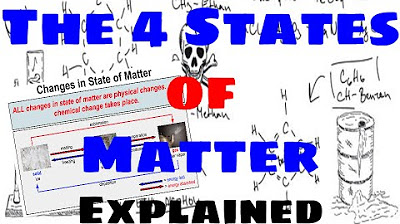Brain Structures & Functions [AP Psychology Unit 2 Topic 6]
Summary
TLDRIn this educational video, Mr. Sim explores Unit 2 Topic 6 of AP Psychology, focusing on the brain's structure and function. He delves into the historical understanding of the brain, highlighting contributions from Carl Wernicke and Paul Broca. The video breaks down the brain into three major regions: hindbrain, midbrain, and forebrain, detailing their specific roles. It also covers key areas like Broca's and Wernicke's areas for language, the cerebellum for balance, and the cerebral cortex for higher cognitive functions. The video is designed to enhance students' understanding of the brain's complexity and its impact on human behavior and cognition.
Takeaways
- 🧠 The brain is a complex organ with over 86 billion neurons, 100,000 miles of axons, and 10 trillion synapses, consuming 20% of the body's oxygen.
- 🏛️ Early brain research dates back to Hippocrates in the first century BC, who speculated about the brain's two halves and their independent processing capabilities.
- 🗣️ Paul Broca identified 'Broca's area' in the frontal lobe, which is crucial for speech production, leading to the understanding of Broca's aphasia.
- 📚 Carl Wernicke discovered 'Wernicke's area' in the temporal lobe, responsible for language comprehension, contributing to the knowledge of Wernicke's aphasia.
- 🌐 The brain is part of the central nervous system and can be divided into three major regions: hindbrain, midbrain, and forebrain, each with specific functions.
- 🧘♂️ The hindbrain includes the medulla, pons, and cerebellum, which control autonomic functions, sleep, and coordination, respectively.
- 🔁 The midbrain acts as a relay station for visual and auditory information and includes the reticular formation and reticular activating system, which regulate arousal and attention.
- 🤔 The forebrain, the largest part of the brain, is responsible for voluntary functions, complex thoughts, and behaviors, and includes the cerebrum and limbic system.
- 🧬 The cerebral cortex, part of the forebrain, is the outer layer of nerve cells where higher cognitive functions occur, and it is divided into four lobes: frontal, parietal, occipital, and temporal.
- 🔄 Association areas within the cerebral cortex connect sensory and motor areas, facilitating higher-level thinking and communication across different parts of the cortex.
Q & A
How many neurons does the human brain have?
-The human brain has over 86 billion neurons.
What is the significance of the number of synapses in the brain?
-The brain has over 10 trillion synapses, which play a crucial role in communication between neurons and are essential for learning and memory.
Who were Carl Wernicke and Paul Broca, and what did they contribute to the study of the brain?
-Carl Wernicke and Paul Broca were researchers who made significant contributions to our understanding of the brain's role in language. Wernicke identified an area in the left temporal lobe responsible for language comprehension, while Broca discovered an area in the left frontal lobe associated with speech production.
What is the function of the hindbrain?
-The hindbrain, located at the bottom of the brain, is responsible for controlling basic biological functions such as autonomic functions, including the regulation of the cardiovascular and respiratory systems.
What is the primary function of the cerebellum?
-The cerebellum is primarily responsible for maintaining balance and managing coordination, allowing for precise movements such as walking in a straight line or using utensils effectively.
How does the reticular formation in the midbrain contribute to our arousal and sleep cycle?
-The reticular formation in the midbrain is involved in arousal and the sleep-wake cycle. It coordinates reflexive and autonomic vital functions, and damage to this area can lead to a coma.
What is the role of the cerebral cortex in higher cognitive functions?
-The cerebral cortex, a thin outer layer of nerve cells, is where all higher cognitive functions occur, including complex thought processes, decision-making, and sensory perception.
What is the function of the motor cortex and how is it represented in the brain?
-The motor cortex is responsible for voluntary movement and is represented by a figure called the motor homunculus, which illustrates the amount of brain area dedicated to specific body parts in relation to their control.
What is the role of the thalamus in processing sensory information?
-The thalamus acts as a relay station for sensory information, sending sound information to the temporal lobes and visual information to the occipital lobes, allowing for the interpretation of sensory data.
How does the limbic system contribute to emotions, learning, and memory?
-The limbic system, which includes structures like the hippocampus and amygdala, plays a crucial role in emotions, learning, and memory. The hippocampus is involved in creating memories, while the amygdala is associated with emotional reactions such as fear and anxiety.
What are the consequences of damage to the basal ganglia?
-Damage to the basal ganglia can lead to movement disorders such as Parkinson's disease, cerebral palsy, and Huntington's disease, as these structures are involved in intentional body movement and linking the thalamus with the motor cortex.
Outlines

Cette section est réservée aux utilisateurs payants. Améliorez votre compte pour accéder à cette section.
Améliorer maintenantMindmap

Cette section est réservée aux utilisateurs payants. Améliorez votre compte pour accéder à cette section.
Améliorer maintenantKeywords

Cette section est réservée aux utilisateurs payants. Améliorez votre compte pour accéder à cette section.
Améliorer maintenantHighlights

Cette section est réservée aux utilisateurs payants. Améliorez votre compte pour accéder à cette section.
Améliorer maintenantTranscripts

Cette section est réservée aux utilisateurs payants. Améliorez votre compte pour accéder à cette section.
Améliorer maintenantVoir Plus de Vidéos Connexes

The Four States of Matter - Explained

Lab Equipment - Explained

3. Gr 11 Life Sciences - Population Ecology - Theory 3 Mark Recapture Method

4. Gr 11 Life Sciences - Population Ecology - Worksheet 1

PENJASKES KELAS X - SOFTBALL

Introduction to Culture [AP Human Geography Review Unit 3 Topic 1]

Menentukan Mr ( massa molekul relatif )
5.0 / 5 (0 votes)
